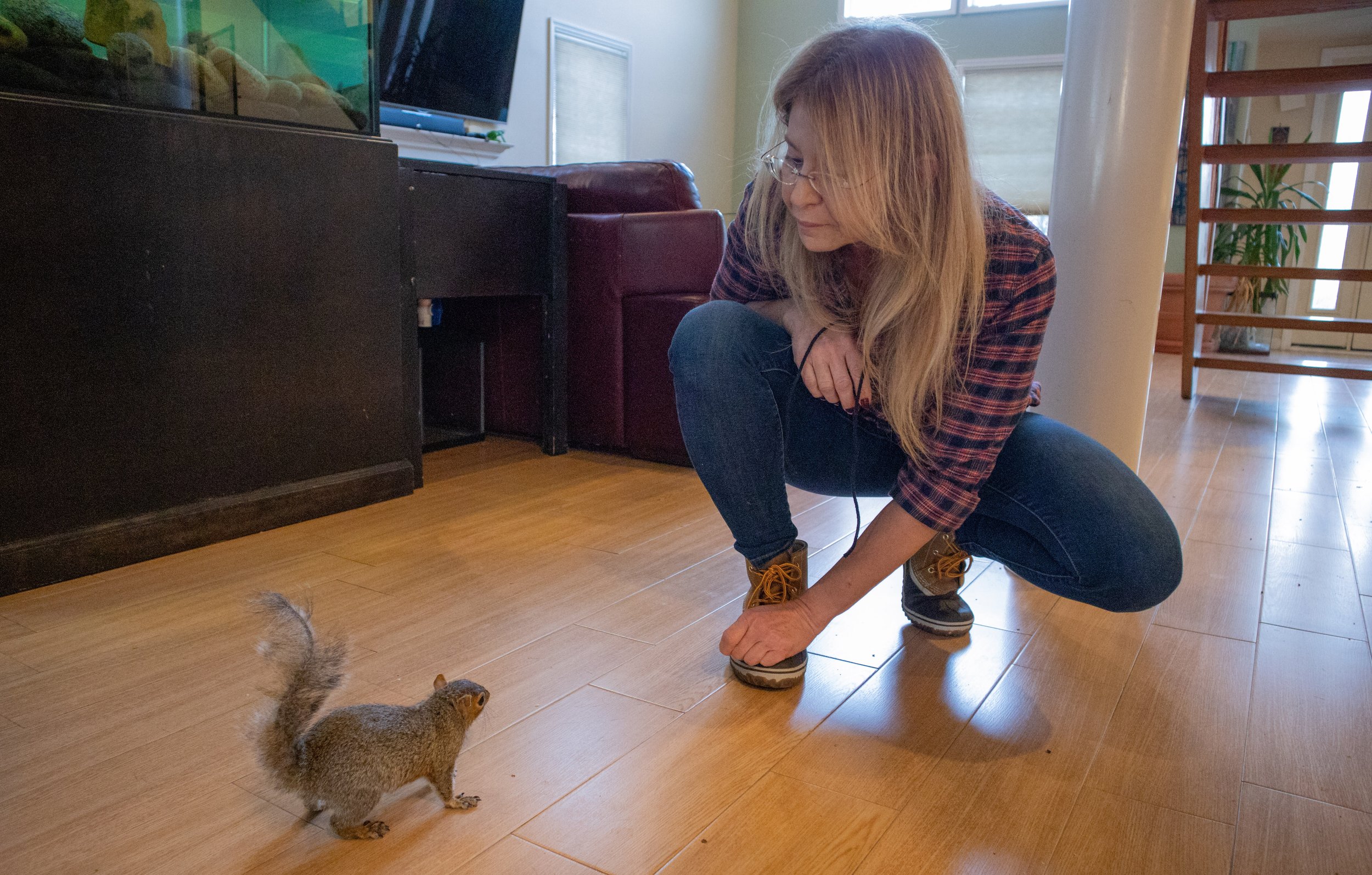Rescuer gone wild
Karenlynn Stracher, a wildlife rehabilitator in Merrick, rescues small animals, waterfowl and reptiles. // Megan Naftali/In Sheer Magazine.
Wild animals face peril on a daily basis whether they are hit by cars or fall from high altitudes. According to WorldAtlas, about 41 million squirrels, 22 million rats, and 19 million opossums are killed on roads annually in the United States. It’s not uncommon for baby squirrels to fall out of their nests. The best thing to do is reunite the baby squirrel with its mother, but some baby squirrels who fall can get lost or hurt when they hit the ground and need to be rescued and paired with a wildlife rehabilitator (The Wildlife Center of Virginia).
There are 26 wildlife rehabilitators in Nassau County licensed with the Department of Environmental Conservation (DEC) to rehabilitate either small mammals, waterfowl, and/or reptiles. A wildlife rehabilitator is someone who voluntarily helps care for injured or sick wild animals while paying for food, veterinary care, and caging out of pocket, according to the DEC.
Before the squirrels are released back into the wild, Stracher places their cages outside with a tarp over it. // Megan Naftali/In Sheer Magazine.
“There is such a need. Once my name got out there, people knew that this is what I do. The calls are 24/7 and it's really hard to say no because the rescue community is very small,” said Karenlynn Stracher, a wildlife rehabilitator in Merrick who rescues small animals, waterfowl, and reptiles.
This photo essay follows Stracher as she rescues and rehabilitates wildlife on Long Island.
The Wild Goose Chase
Karenlynn Stracher, a wildlife rescuer and rehabilitator from Merrick, Long Island, attempts to catch a wild hurt goose in Village Green Park in Valley Stream. The goose has been at the park for two months after falling into the Valley Stream Dog Park and getting injured. // Megan Naftali/In Sheer Magazine.
Stracher removes her shoes to chase the goose through a pond. The goose is incapable of flying high, but can still fly low to the ground making it difficult to catch. // Megan Naftali/In Sheer Magazine.
Stracher catches the goose behind Valley Stream Dog Park with the help of Sophia, who has been feeding the goose at the park for two months. Sophia is leaving to go on a trip and with no one feeding the goose, it could die. // Megan Naftali/In Sheer Magazine.
The goose is calm in Stracher's arms as she holds down its wings and walks him back to the car. // Megan Naftali/In Sheer Magazine.
Stracher opens the door to the trunk of her car to place the goose in a crate after an hour and a half chase. She takes the goose home to rehabilitate him while Sophia is away. // Megan Naftali/In Sheer Magazine.
Home Wildlife Rehabilitation
Brian, one of the two squirrels Stracher keeps as pets, has congenital dwarfism. His arms and legs are too short, he can't jump well or walk normally and he is ataxic. Most squirrels with his condition don't live to adulthood, but under Stracher's care Brian is thriving. // Megan Naftali/In Sheer Magazine.
Stracher feeds the squirrels fruits and vegetables. She keeps a cage of young squirrels outside in her backyard because they are now healthy, but they are too young to be released. // Megan Naftali/In Sheer Magazine.
Xena, a 10-week-old squirrel, fell out of a tree at about six weeks old. She is blind, but it is unclear whether she was born blind or if she was blinded by the head trauma. // Megan Naftali/In Sheer Magazine.
Stracher performs physical therapy on a young opossum after his hand was injured in a snap trap. // Megan Naftali/In Sheer Magazine.
Precious, Stracher's second pet squirrel, wanders around her house freely. Precious was born perfect, but after losing her mom, she got cold and stopped breathing. When Precious was resuscitated, she suffered from an anoxic brain injury that left her ataxic. After the rehabilitation of Brian and Precious, Stracher decided to keep them because they would still have a good quality of life, but with their disabilities would not be able to survive in the wild. // Megan Naftali/In Sheer Magazine.











